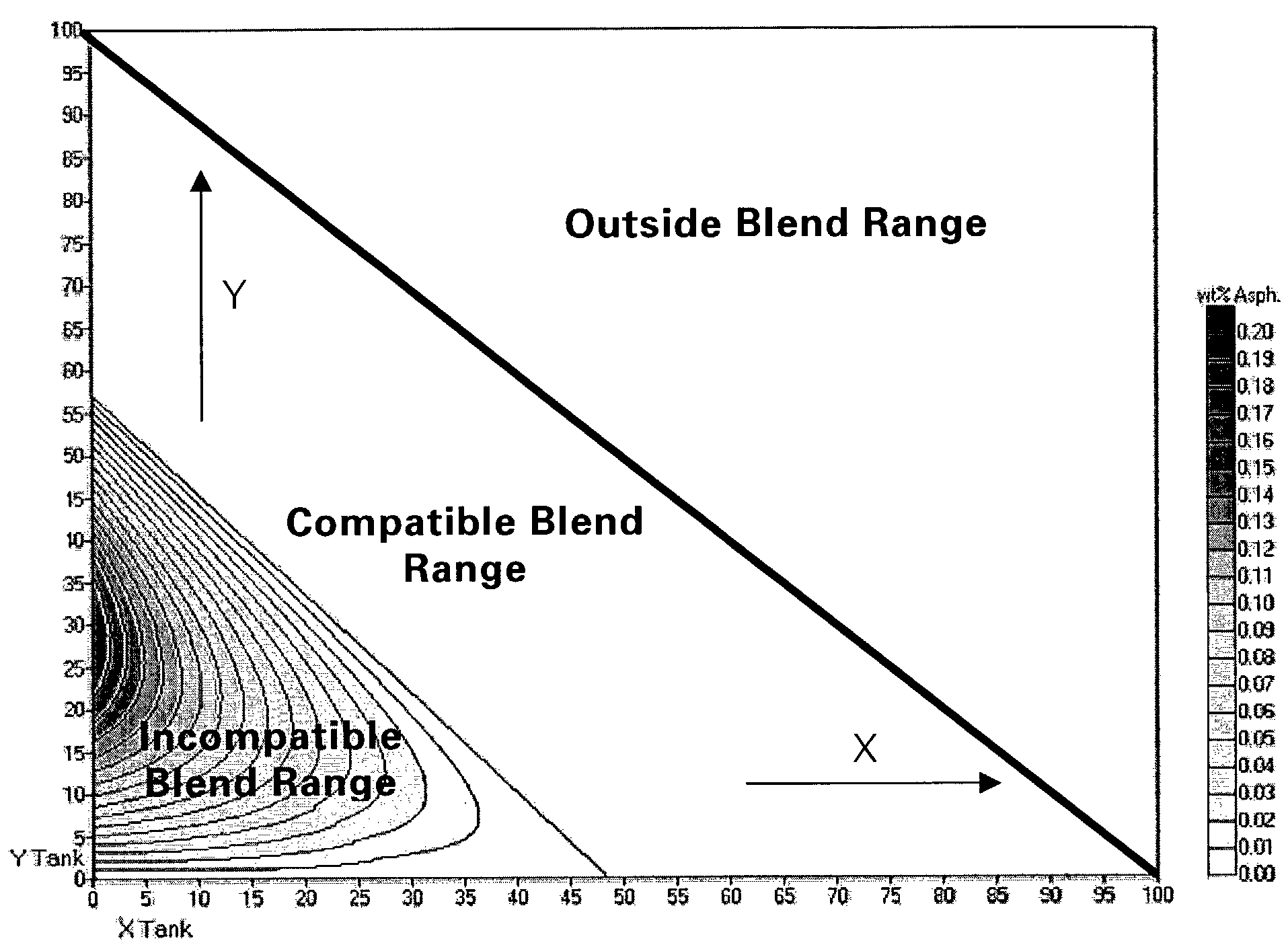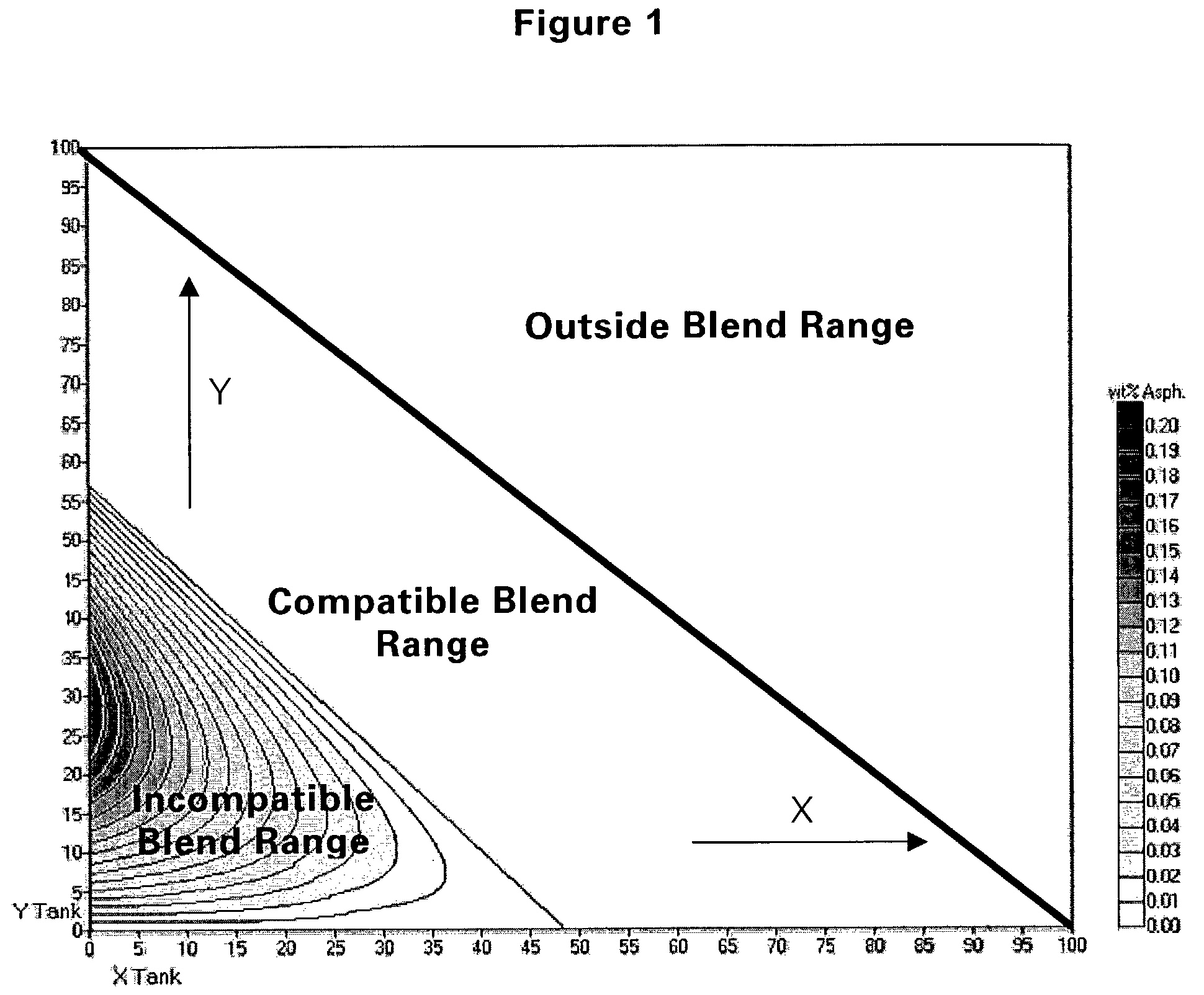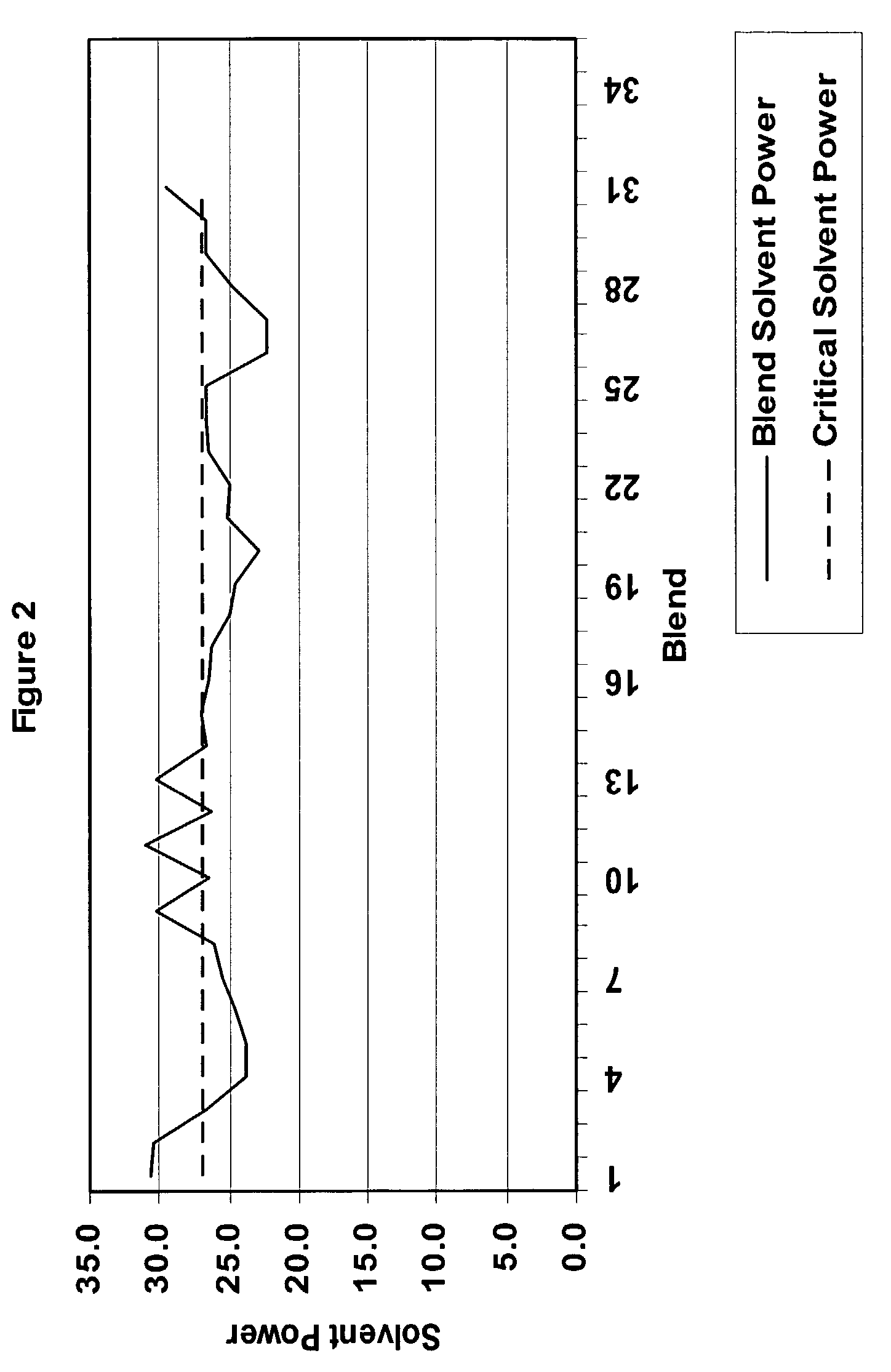Predictive crude oil compatibility model
- Summary
- Abstract
- Description
- Claims
- Application Information
AI Technical Summary
Benefits of technology
Problems solved by technology
Method used
Image
Examples
example # 1
EXAMPLE #1
[0066]Example 1, which is graphically depicted in FIG. 1, represents a predictive model in accordance with the subject invention wherein crude oil X, crude oil Y and crude oil Z are blended in a three-component blend. As depicted in FIG. 1, the model ranges in % vol. where the separate crude oils are compatible and incompatible for blending. The X-axis represents % vol. of crude oil X and the Y-axis represents % vol. of crude oil Y. The balance at any point is the % vol. of crude oil Z. Crude oil X has a solvent power of 40.0 and critical solvent power of 27.2. Crude oil Y has a solvent power of 37.3 and a critical solvent power of 30.1. Crude oil Z has a solvent power of 22.2 and a critical solvent power of 16.6. In addition to predicting the incompatibility of crude oil blends, the “Incompatible Blend Range” range also illustrates the amount of aphaltenes in % wt. expected to precipitate out of the crude oil blend at that blending range.
example # 2
EXAMPLE #2
[0067]Example 2 is a predictive model of process unit fouling (asphaltene precipitation) resulting from the blending of various crude oils at a refinery over a period of time. The model is graphically depicted in FIG. 2 and numerically depicted in the Table. FIG. 2 depicts the solvent power of the various blends in comparison with the critical solvent power of the crude oil having the highest critical solvent power in each blend. The solvent powers of each crude oil and each crude oil blend were calculated as described herein. The critical solvent powers of each crude oil were calculated as described herein. The Table numerically illustrates FIG. 2 at selected representative time periods. The Table also shows the solvent powers of each crude oil in the various blends and the weight % fraction each crude oil contributes to the various blends. The data from Example 2 predicts that where the blend solvent power is less than a critical solvent power of 26.9 significant fouling...
PUM
 Login to View More
Login to View More Abstract
Description
Claims
Application Information
 Login to View More
Login to View More - R&D
- Intellectual Property
- Life Sciences
- Materials
- Tech Scout
- Unparalleled Data Quality
- Higher Quality Content
- 60% Fewer Hallucinations
Browse by: Latest US Patents, China's latest patents, Technical Efficacy Thesaurus, Application Domain, Technology Topic, Popular Technical Reports.
© 2025 PatSnap. All rights reserved.Legal|Privacy policy|Modern Slavery Act Transparency Statement|Sitemap|About US| Contact US: help@patsnap.com



